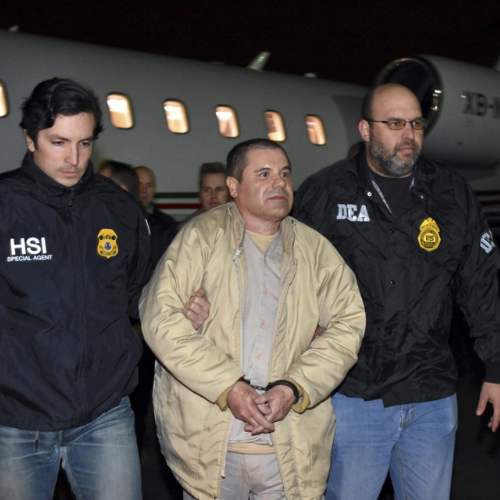For more than twenty years, the United States secretly used drones to spy on powerful drug cartels in Mexico, including those led by Joaquín “El Chapo” Guzmán. These drones were unarmed and flew high above cartel territories, recording their movements and gathering intelligence.
This secret operation was a joint effort between the U.S. Department of Homeland Security and the Central Intelligence Agency. The drones were used at the request of the Mexican military, helping them track down and capture dangerous cartel members. Among the many criminals caught with the help of these drones was one of the world’s most notorious drug lords—El Chapo.
El Chapo was the leader of the infamous Sinaloa Cartel, a criminal organization responsible for smuggling massive amounts of drugs into the United States. He was known for his ability to escape from high-security prisons and evade capture. But with the help of drone technology, authorities were finally able to bring him down.
How Drones Helped Catch El Chapo
The U.S. drone program first began tracking El Chapo in 2001, shortly after he escaped from a Mexican prison. For years, these drones quietly watched over Sinaloa state, gathering intelligence and identifying his movements.
New U.S. Sanctions Choke Iran’s Missile and Drone Ambitions
In 2014, the drones played a key role in one of the biggest arrests in history. After years of tracking, authorities learned that El Chapo was hiding in a hotel in the resort city of Mazatlán. The information gathered from the drones allowed law enforcement to move in quickly and arrest him. However, not long after, one of the drones used in the operation suffered a mechanical failure and had to be deliberately crashed into the Pacific Ocean.
Despite being behind bars, El Chapo managed to escape once again in 2015 through a secret tunnel beneath his prison cell. This led authorities to launch an even more aggressive effort to track him down. U.S. drones continued to survey cartel strongholds in Sinaloa, capturing footage of El Chapo’s hideouts and travel patterns.
In 2016, a drone hovered over the city of Los Mochis as Mexican special forces raided one of El Chapo’s safe houses. Although he managed to flee during the raid, a local police officer later spotted him, leading to his arrest. This marked the end of his reign as one of the world’s most feared drug lords.
The Power of Drone Surveillance
The secret U.S. drone program didn’t just help capture El Chapo. Over the years, it has assisted in many other high-profile arrests related to drug cartels. The drones, mainly MQ-9 Reapers, are the same type used in counterterrorism operations worldwide. They provided real-time surveillance footage, allowing authorities to map out cartel activity, locate drug labs, and track the movements of key cartel figures.
Even after El Chapo’s capture, the drones continued to operate in Mexico. In 2023, intelligence gathered from these drones helped locate his son, Ovidio Guzmán, another key figure in the Sinaloa Cartel. Just recently, the operation aided in the arrest of a security chief working for El Chapo’s son.
The Mexican military, with the intelligence provided by the U.S., has been able to carry out dangerous missions against these powerful criminal organizations. One U.S. military official even stated that the Mexican forces are highly capable but benefit from the intelligence support provided by American drones.
Despite the success of the operation, the future of the drone program remains uncertain. The U.S. and Mexico have had tensions regarding security cooperation, and it is unclear how long these secret drone missions will continue. However, what is certain is that this technology played a significant role in bringing down one of the most dangerous cartel leaders in history.


